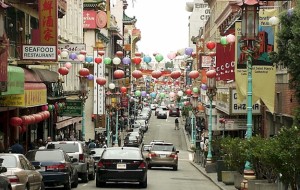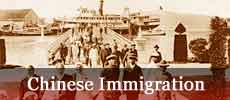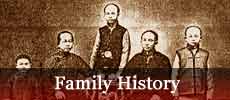By Maya Chin
 San Francisco Chinatown is a happening place now. When people visit San Francisco they have to visit Chinatown because it is the city’s top tourist attraction. Tourists find the colorful buildings, red lanterns, and dragon statues “exotic” because it is different from their culture. In reality, most of these decorations are fake. They were added to Chinatown after the 1906 earthquake and fire in order to make Chinatown tourist attraction that would benefit San Francisco.
San Francisco Chinatown is a happening place now. When people visit San Francisco they have to visit Chinatown because it is the city’s top tourist attraction. Tourists find the colorful buildings, red lanterns, and dragon statues “exotic” because it is different from their culture. In reality, most of these decorations are fake. They were added to Chinatown after the 1906 earthquake and fire in order to make Chinatown tourist attraction that would benefit San Francisco.
After the earthquake, the city’s reconstruction committee had wanted to move Chinatown away from downtown and arranged for it to be relocated in the outer Richmond district.
Oriental Disneyland
The leaders of Chinatown were not happy with this arrangement. They fought for Chinatown until a new arrangement was made. Chinatown could stay where it was as long as it was rebuilt as a tourist attraction. In order to this they would make the architecture “oriental,” the way Americans pictured China. The architects were American and their designs were from their imagination. They made colorful balconies, curved eaves, plenty of pagoda tops, and added dragon motifs.
“And so you have this effect of the trademark of Chinatown today where it’s very much an Oriental Disneyland,” said historian Judy Yung when describing Chinatown (55). And so Chinatown went from a dingy, ugly place to a colorful commercial district.
Today, while Chinatown is a big tourist attraction, it is also home to many immigrant Chinese families. It is now covers about eight blocks and is crowded with residents and visitors. It is one of the most densely populated neighborhoods in the United States. About 100,574 mostly working- and middle-class people live in the neighborhoods that make up Chinatown.
Growing Up
The children living in Chinatown have a difficult life. Most of them live in S.R.O.s, which stands for single room occupancy buildings. Whole families live in one-room apartments that were meant for one person, not families of four or six. Families have to share a common bathroom and kitchen with the other families on the floor.
The children go to American public schools, but they also have to go to Chinese school either everyday after school or on the weekends. This means that they have double the homework. Typical Chinese parents put a lot of pressure on their kids to do well in school so that they can succeed in life.
Most kids in Chinatown are bilingual, meaning that they can speak both Chinese and English. The kids usually speak English around each other because they go to American schools. But you will often hear the mixing together the two languages which is called “broken English.”
“One boy told me that his parents always talk to him in Chinese even though he talks back to them in English—he says that ‘broken English is a mark of a new immigrant, but broken Chinese is the mark of being Chinese American,'” says Bonnie Tsui, author of American Chinatown: A People’s History of Five Neighborhoods, in an interview.
Even though this is a new generation, racism is still a big problem among kids. At some schools, kids are still picked on for being “different.” Some young students think that just because a kid is a different ethnicity, it means that they are somehow less American. Still, things are improving. Take Rev. Norman Fong, who was born and raised in Chinatown. When he was kid in around 1950, if you were every caught alone outside of Chinatown, you would be beat up for sure. He was walking through North Beach one day when he was attacked by some Italians, who tied him to a fence. Then, they proceeded to pelt him with water balloons. He found the experience altogether humiliating, as would anybody.
What the kids in Chinatown think about their history? They are very impressed by their ancestors that had to go through so much and are glad they don’t have to deal with a lot of that stuff today.
“Okay, well, some parts of the history makes me proud and some parts make me just so mad at society. Like the reason Chinatown existed in the first place is racism—people weren’t allowed to leave. It was a ghetto, so the community had to survive on its own. The history has taught me to be proud of my own community,” says Rosa Wong-Chie in Bonnie Tsui’s book, American Chinatown (39).
Charlie Chin, an historian at the Chinese Historical Society of America, had similar experiences growing in New York in the 1950s.





